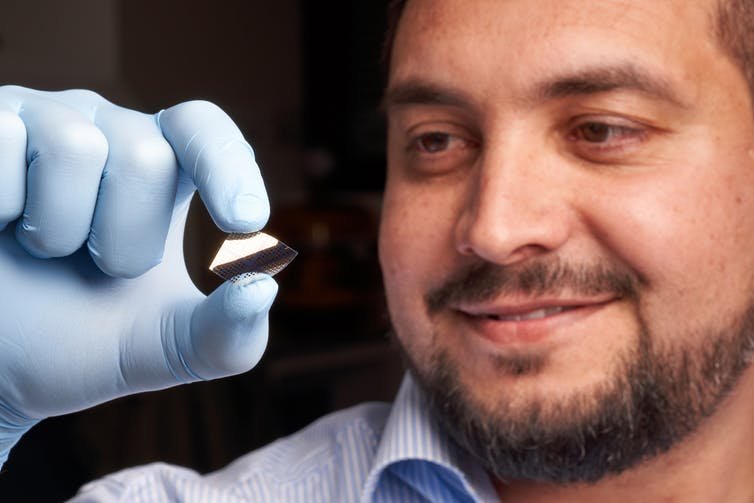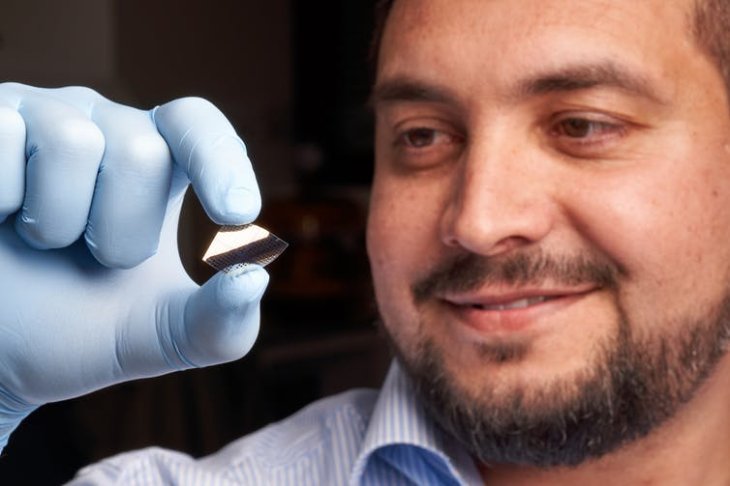This Electronic Chip Creates Memory Exactly Like The Human Brain
Dhir Acharya - Jul 25, 2019

What can we do to make a computer chip smarter? Probably the best option is to mimic the human brain, the most perfect computer in nature.
- Qualcomm Announces Snapdragon 870; To Debut Soon In Xiaomi, OnePlus, Motorola Smartphones
- Like A Sci-Fi Movie, A Nail Salon In Dubai Is Offering Microchip Manicure
- Qualcomm Announced Snapdragon 888, The Next Mobile Chip For High-End Smartphones
What can we do to make a computer chip smarter? Probably the best option is to mimic the human brain, the most perfect computer in nature. Essentially, a chip stores, deletes, and processes information, which the brain does extremely efficiently.
Now, a recently developed processor relies on light to generate as well as modify memories, bringing us closer to creating AI with the ability to replicate the sophistication of the human brain.

The research team turned to optogenetics, to develop a device which replicates how the brain stores information. This technique involves the use of light to control nerve cells (neurons) in living tissue.
In this area of science, researchers can learn more about the electrical system of the body with remarkable precision which uses light to turn neurons on and off. So what if the same approach is applied for computer chip design?
The use of light in making memories
The brain’s nerves are connected via electrical impulses. And the human brain begins making a memory when tiny energy spikes reach a specific voltage threshold and the neurons bind together. The new processor is expected to conduct the same process by using electronics.
The researchers made the chip with an ultrathin material which changes electrical resistances corresponding to the changes of light’s wavelength. Thanks to this, the chip can mimic that way neurons store and remove information inside the brain.
As a result, we can control the inner workings of the brain just by shining colors onto the chip.
Plus, according to the research team, the processor is able to carry out basic info processing, which involves simple logic operations where it combines several inputs to generate a particular output. With this ability, the researchers just fulfilled another capability of the human brain.

The operation of the chip
By shining a light onto the processor, we create an electric current in its material, which is sensitive to light. And by changing colors, we make the current reverse direction between negative and positive.
The change in direction means binding and breaking the connections between nerve cells inside the brain. When the neurons are connected, they form new memories while disconnecting them means forgetting the memories.
With optogenetics technique, modifying neurons using light causes them to turn off and on, which inhibits or enables connections from one neuron to another in the chain. And the new chip can mimic this process.
The team developed the technology by using black phosphorus that has a bit deformed molecular structure because of missing atoms. While this kind of defects poses problems for electronics, the research team took advantage of it. The defects allow them to manipulate the behavior of the material to mimic not only the connections but also the disconnections of nerve cells which depends on the wavelength of the light shone on it.

The future of the chip
With this chip, we are moving closer to efficient, fast, and secure light-based computing.
In addition, the chip is a big leap towards creating a bionic brain with the ability to learn from the surrounding environment as humans do.
By making an electronic chip to replicate neural behavior, we can further research to have a better understanding of the human brain as well as how disorders affect it, as in Alzheimer’s disease or other forms of dementia.
The human brain consists of billions of nerve cells in connected networks. The neurons communicate with one another by expressing various behaviors through electrical signals sequences, like sensory organs, emotions or memory.
If these sequences are disrupted, neural connections may be gone, which leads to dementia and memory loss.
To cure these disorders, we need to identify the faulty neurons and restore their signaling routine, avoiding impacting on other neuron’s functioning.
This means with a computer model of the human brain, neuroscientists can simulate brain functions as well as abnormalities, and develop cures with no need to test on living subjects.
We can also apply this technology in smart gadgets, bionic prosthetics, electronics which comes with AI.
However, before commercializing the technology, scientists still have a number of hurdles to overcome. And apparently, there’s still a long way to go before they can build a network that is as large and sophisticated as the human brain or even a piece of it that neuroscientists can use.
The final goal of the team is using this tech to interface living tissues, open a wider door for bionic devices like retinal implants. Human’s retina includes cells that are sensitive to different light wavelengths, creating a signal which the brain can interpret as colors. Plus, for each different wavelength, the chip responds differently, so hopefully, someday, we can use it to create artificial retinas.
Featured Stories

Features - Jul 01, 2025
What Are The Fastest Passenger Vehicles Ever Created?

Features - Jun 25, 2025
Japan Hydrogen Breakthrough: Scientists Crack the Clean Energy Code with...

ICT News - Jun 25, 2025
AI Intimidation Tactics: CEOs Turn Flawed Technology Into Employee Fear Machine

Review - Jun 25, 2025
Windows 11 Problems: Is Microsoft's "Best" OS Actually Getting Worse?

Features - Jun 22, 2025
Telegram Founder Pavel Durov Plans to Split $14 Billion Fortune Among 106 Children

ICT News - Jun 22, 2025
Neuralink Telepathy Chip Enables Quadriplegic Rob Greiner to Control Games with...

Features - Jun 21, 2025
This Over $100 Bottle Has Nothing But Fresh Air Inside

Features - Jun 18, 2025
Best Mobile VPN Apps for Gaming 2025: Complete Guide

Features - Jun 18, 2025
A Math Formula Tells Us How Long Everything Will Live

Features - Jun 16, 2025
Comments
Sort by Newest | Popular